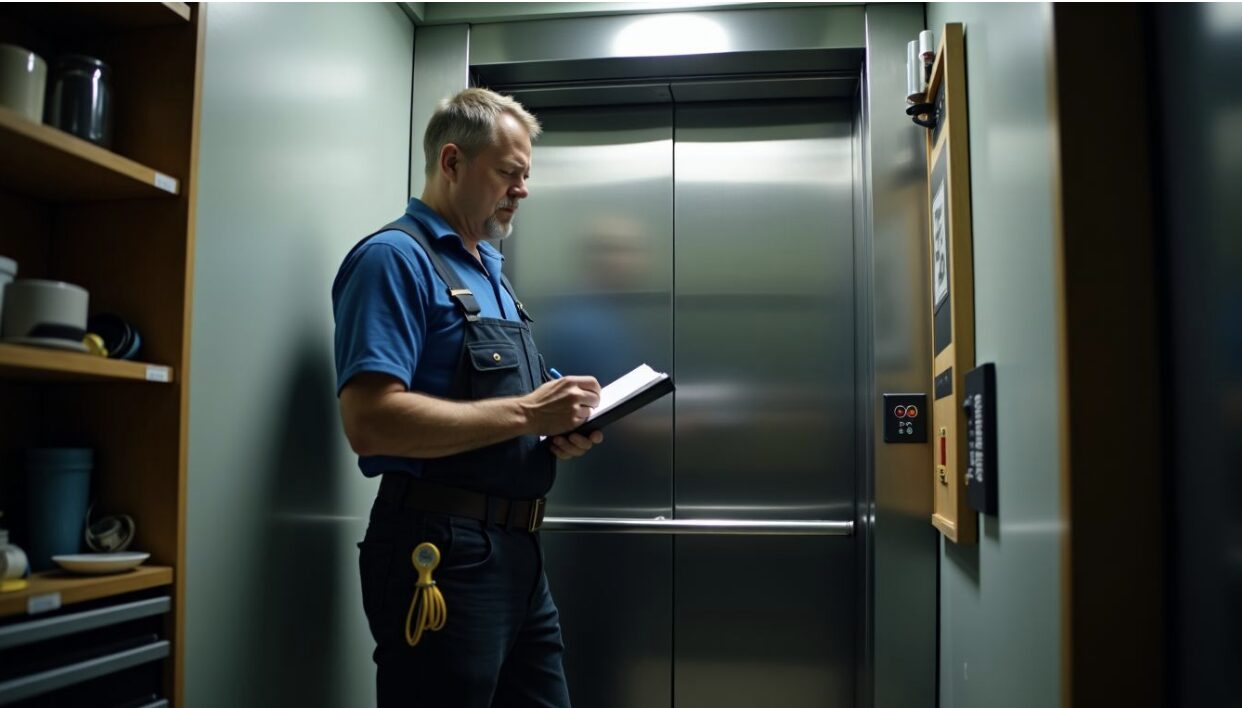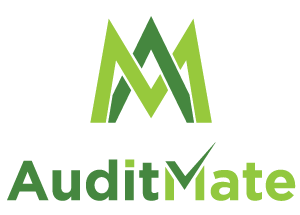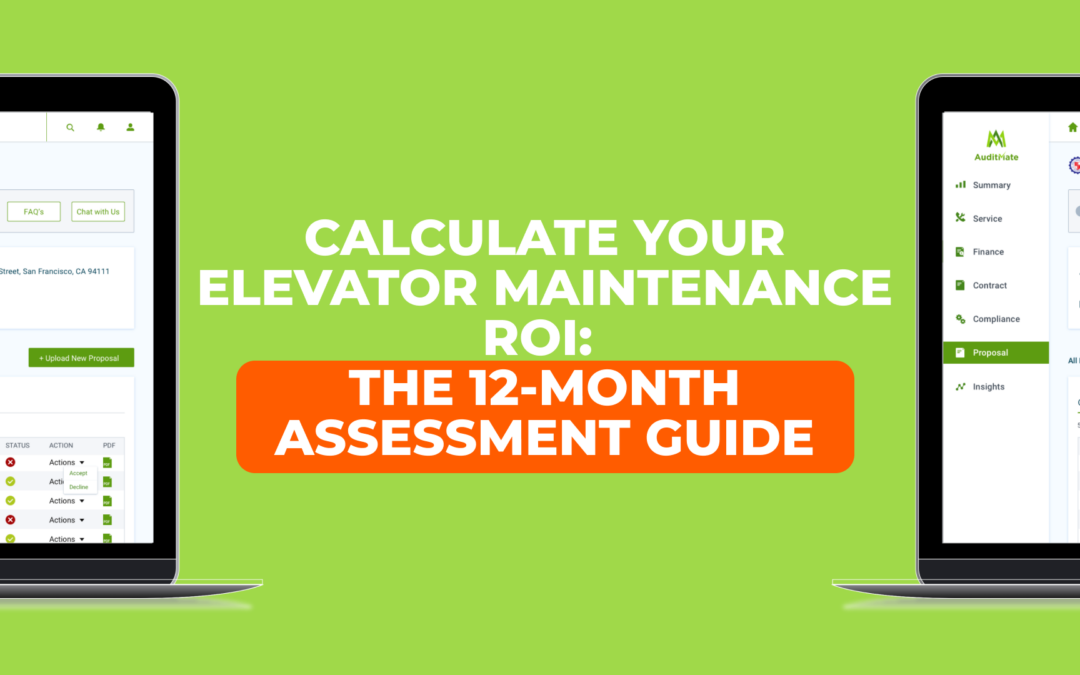Building owners value elevator maintenance. It saves them money by reducing repairs, saving energy, extending part life, cutting overtime pay, improving tenant satisfaction, and postponing major overhauls.
Our guide makes it simple for you to track these savings through the right tools. We cover elevator maintenance costs, checklists, contracts, downtime rates, customer satisfaction ratings, legal requirements for lift maintenance, and more.
Learn to effectively measure elevator performance and budget your maintenance cost-effectively. This includes calculating ROI over 12 months through a detailed cost-benefit analysis and understanding the impact of maintenance on property value.

Understanding Elevator Maintenance ROI
Elevator Maintenance ROI Calculation shows the value of maintaining elevators in a good condition. It calculates cost savings, improved performance, and tenant satisfaction to see if it pays off.
Requirement for tracking long-term value
Tracking long-term value illustrates the value of elevator maintenance through measuring the performance of the elevator over time. It reduces risks such as injury or dissatisfied tenants. Performance, financial, and customer satisfaction measurements are critical in calculating this value.
Regular checks and meeting maintenance objectives guarantee elevators work efficiently and safely, saving costs by preventing significant problems in the first place. Happy customers and reliable elevators lead to higher revenue growth.
Performance enhancement, risk reduction, contract review, price analysis, operational effectiveness, financial well-being, revenue increase, contract extension, preventive maintenance, and customer satisfaction are essential to elevator maintenance ROI.
Key metrics for measuring ROI
Customer satisfaction and downtime percentage should be prioritized in measuring ROI for elevator maintenance. Keep the elevators operating more than 95% of the time to reduce breakdowns. Achieve at least 90% customer satisfaction as happy customers provide more users.
Frugality due to better operational efficiency matters. Energy conservation saves costs. Durable components minimize long-term costs.
Less overtime by employees lowers pay costs. Properly maintained elevators improve the popularity of buildings, allowing longer stays by visitors or tenants.
Delaying costly overhauls on the basis of smooth system functioning saves enormous sums.
ROI metrics are useful in evaluating these fields by quantifying many performance measures and illustrating dollar returns.
Less callback is also crucial in maintaining profitability and efficient delivery of services.
Callback Reduction Metrics
Observing a reduction in service calls after routine elevator maintenance shows that it’s working. It is a sign of elevators becoming more reliable, decreasing downtime, and enhancing customer satisfaction.
Monitoring service call frequency declines
The success of elevator maintenance is quantifiable through measuring the service call rate. Reduction signifies improvement, showing the fact that problems are being solved effectively.
This trend should reflect a steady fall in service call rate, indicative of improved-performing elevators.
Technology solutions for monitoring help streamline data pertinent to service calls. They identify trends and emphasize favorable changes. With such technology, decision-making becomes more convenient with sophisticated peeks into effective approaches as well as areas of concern.
These technologies facilitate understanding of callback rates, increasing call center productivity and customer satisfaction by reducing response times to services and enhancing overall service quality measures.
Energy Efficiency Savings
Elevator system updates can reduce energy bills. This intelligent maintenance enhances savings and efficiency, such as reduced elevator maintenance expenses and downtime rates.
Monitoring cost savings with energy-efficient systems
Monitoring savings in costs from energy-saving systems can be observed through the evaluation of lowered energy charges following their implementation. For instance, if a building incorporates an energy-saving elevator, the owner can observe a $200 reduction in bills due to reduced electricity consumption.
This saving continues to grow with every time that goes by, accruing both economic and environmental benefits.
Energy efficiency saves money and diminishes carbon dioxide emissions. Energy-saving technology use contributes to enhancing indoor conditions and promotes environmental preservation.
Moreover, the application of ROI calculators makes such benefits easily apparent, facilitating sound choices for maintenance and future enhancement.

Component Life Extension Data
Tracking elevator components’ lifespan saves money. Knowing when to replace them prevents major problems and keeps costs in control.
Assessing enhanced durability of elevator components
In our evaluation of the increased lifespan of elevator components, we test their capacity to withstand more usage without failure. We perform longevity tests and track the components that remain operational over time.
This method detects components with a lower replacement rate, thus encouraging component lifespan extension. Our results also indicate that minimizing labor expenses during downtime positively affects the overall effectiveness of maintenance.
Overtime Reduction Tracking
Tracking overtime savings gauges the extent to which elevator maintenance saves money by reducing the need for overtime pay in repairs done outside working hours. Planned maintenance checks avoid costly emergencies, leading to savings.
Tracking labor costs between peak times
Keeping elevator maintenance at low costs during off-seasons maintains low labor costs. It optimizes the efficient use of workers and saves money. Monitoring is fundamental in tracking performance.
Reducing overtime saves on maintenance.
Shifting service hours in less busy times saves money. Looking at these times helps building owners know how to cut costs on labor pay. This saves money and achieves the same results at minimal expense.
Efficient scheduling in slow periods is the key to saving money.
Tenant Satisfaction Connection
Happy tenants indicate your elevators are in good shape due to quality maintenance. This provides fast, comfortable rides that increase satisfaction.
Aligning maintenance quality with tenant comfort and retention
Friendly elevators translate into satisfied tenants. This reduces breakdowns and offers a silky smooth ride, which leads to tenants renewing their leases. Enhanced maintenance of elevators increases tenant satisfaction by 20-30%.
In addition, with over 80% of tenants happy with elevator service, they are more likely to remain longer for 15-30%. For owners, this means higher occupancy rates. Effective elevator maintenance means higher tenant comfort and loyalty.
Savings in Modernization Deferral
Elevator maintenance saves money by avoiding big updates. ROI tools measure the savings and help decide when updates can be postponed without risk.
Calculating cost benefits of delaying major system upgrades
Putting off major system overhauls can have a saving factor. It doesn’t entail having to spend all at one time in the form of enormous costs, providing for other needs. It also allows for further time to plan upgrades when needed.
“Saving now allows more informed planning and spending later.”
Return on investment (ROI) calculators are employed to determine such savings. They outline how delaying the upgrade can be cost-cutting in the short term. Such calculators simplify the decision-making process, indicating when spending money on large changes is financial sense.
Using ROI Calculation Tools
ROI calculators simplify the process, allowing easy notice of elevator maintenance costs and making maintenance schedule decisions, performance audits, and budgeting easier.
Using software and calculators to accurately evaluate
Software makes tracking service performance measures easy. It shows a drop in service calls, which is equivalent to time and money savings. Tools also monitor energy consumption. They show savings in using efficient systems.
Software finds durable parts, reducing repair needs.
The system estimates repair work hours during busy times of the day. Reducing overtime saves dollars. There is a link between elevator maintenance and higher tenant retention rates.
The software warns against premature upgrades, leading to further savings.
All these findings support business goals for optimal operating efficiency without exorbitant spending on elevator maintenance, consistent with market conditions for continuous improvement and customer satisfaction.
Designing a 12-Month ROI Review Plan
Start your 12-month ROI plan to analyze by gathering data on callback reduction, energy savings, component life, and labor cost. Also, include tenant response and benefits of delaying major improvements. Use technology tools to work with this information to make better maintenance decisions.
Steps to buy and analyze maintenance information
Utilize a free elevator maintenance checklist to monitor work. Receive reports monthly to determine if the maintenance aligns with the contract. Review your costs and renewals. Technology allows you to access data at any time and makes KPI monitoring easier.
Enhance your team with proper training.
Technology provides immediate insight into what is happening now.
After gathering data, observe if service calls reduce. This means less elevator repair is required. Look for energy savings through reduced usage. Assess how long elevator components last.
Assess savings from reduced overtime during peak periods. If tenants indicate greater satisfaction after repair, it may translate to longer stays in your building. Calculate cost savings through postponing full system upgrades.
Finally, apply these findings in decision-making.
Interpreting ROI Results for Decision-Making
Your ROI calculation for your elevator helps you decide on the best maintenance schedule, making the investment pay. It entails comparing maintenance costs of your elevator, the downtime rates, and the levels of customer satisfaction to alter or transform your strategies for improvement.
Translating insights into successful maintenance strategies
Building owners must track their elevator data on a regular basis. They should review repair frequency and power usage. Less repair work means effective elevators. Use less power too to save.
Investing in upgrading can avoid larger costs in the future. Running elevators at a smooth rate during rush hours reduces expenses.
Listening to tenants is important for a successful business. Happy tenants remain longer, and this increases profits. In some cases, holding off on big upgrades is cheaper if done well.
Performance-monitoring tools and usage over the year assist in making informed maintenance decisions without speculation.
Translating insights into effective maintenance practices involves the translation of ROI results into decision-making for elevator maintenance, maintenance schedules, risk reduction, liability management, and enhancing tenant satisfaction through reliable service and minimal downtime rates with adherence to safety checks and fulfillment of maintenance contracts through monitoring key performance indicators (KPIs) for operational effectiveness and customer satisfaction levels.
Conclusion
Calculating the return on investment (ROI) of elevator maintenance over a year saves money and enhances system performance. Intelligent financial decisions are made through callback rates monitoring, energy saving, part life extension, overtime reduction, tenant satisfaction, and delay in major upgrades.
ROI calculation tools are useful in this process. This approach ensures elevators operate efficiently and economically.
FAQs
- Why would I require a 12-month elevator maintenance ROI assessment guide?
The 12-month elevator maintenance ROI assessment guide comes handy while estimating the return on investment of your elevator maintenance for one year. It is a guide to understand whether the investment is yielding good returns. - Why would estimating my elevator maintenance ROI be helpful for me?
By calculating your elevator maintenance ROI, you are able to see the expense of maintaining your elevators. This assists you in making intelligent decisions about budgeting and whether your methods are effective and cost-worthy. - Can I still use this guide if I have no knowledge about finance or elevators?
Yes! The 12-month ROI guide simplifies complex formulas into easy steps so that anyone regardless of finance or elevator knowledge background can easily use it. - What do I do after determining my Elevator Maintenance ROI with this guide?
Once you’ve calculated your Elevator Maintenance ROI through our 12-month analysis tool, you’ll have tangible data that can be applied to make informed decisions in the future about where and how much to invest in maintaining your elevators.

